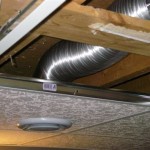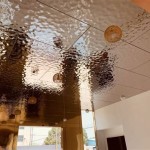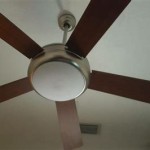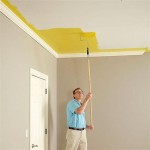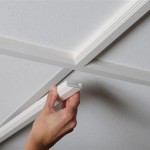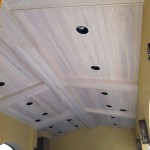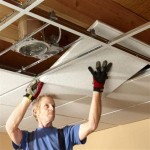How to Cut Crown Molding for Sloped Ceilings
Crown molding adds a touch of elegance and sophistication to any room. However, installing crown molding when dealing with a sloped ceiling presents unique challenges. Unlike standard 90-degree corners, sloped ceilings require precise angle calculations and cuts to ensure a seamless fit. This article provides a comprehensive guide on how to accurately cut crown molding for sloped ceilings, covering essential techniques and tools for a successful installation.
Understanding the Angles
The primary difficulty in cutting crown molding for sloped ceilings lies in determining the correct miter and bevel angles. These angles differ significantly from those used in standard square rooms. To calculate these angles accurately, one must first determine the spring angle of the crown molding and the angle of the slope. The spring angle is the angle that the back of the crown molding makes with the wall when installed. This information is typically provided by the molding manufacturer, but it can also be measured using a protractor.
The slope angle refers to the angle between the ceiling and the wall. This angle is crucial for calculating the correct miter and bevel angles necessary for a precise fit. The slope angle can be measured using an angle finder, a digital level with angle measurement capabilities, or by traditional methods involving trigonometry. Accuracy in measuring the slope angle is paramount, as even a slight error can result in noticeable gaps and misalignments.
Once the spring angle and slope angle are known, specific formulas or online calculators can be employed to determine the correct miter and bevel settings for the miter saw. Several resources online, including woodworking websites and forums, offer formulas and calculators designed for this purpose. These calculators typically require inputting the spring angle and slope angle to generate the precise miter and bevel angles for both inside and outside corners.
It's important to differentiate between inside and outside corners on a sloped ceiling. Inside corners are those where the molding meets in a recessed area, while outside corners protrude. The formulas and calculator outputs will differ based on whether an inside or outside corner is being cut. Double-checking that the correct type of corner is selected is crucial to prevent errors.
Furthermore, consider the direction of the slope. If the slope angles inward or outward, the calculations and cutting techniques will need to be adjusted accordingly. Visualizing the intersection of the molding pieces and understanding how they will meet at the corner is essential for determining the appropriate cutting strategies.
Essential Tools and Preparation
Successfully cutting crown molding for sloped ceilings necessitates a few key tools. A miter saw with bevel capabilities is indispensable. This type of saw allows for both miter and bevel cuts, which are necessary for accurately creating the complex angles required for sloped ceilings. The saw should have a blade suitable for cutting wood molding, typically a fine-tooth blade to minimize splintering and produce clean cuts. A compound miter saw is ideal, offering more flexibility and precision.
Alongside the miter saw, an accurate measuring device is crucial. A high-quality protractor or angle finder will help in determining the precise angle of the slope. Digital angle finders often provide greater accuracy than traditional protractors. Consider investing in a digital level that also displays angles for added versatility.
A marking tool, such as a sharp pencil or a marking knife, is also essential for transferring measurements onto the crown molding. Precision in marking the cut lines directly affects the accuracy of the cuts. Using a marking knife can create a very fine line, which is particularly helpful when working with intricate details.
Safety equipment is paramount when operating power tools. Eye protection, such as safety glasses or goggles, is essential to protect the eyes from flying debris. Hearing protection, such as earplugs or earmuffs, will mitigate the noise generated by the miter saw. A dust mask or respirator is recommended to prevent inhalation of sawdust, which can be harmful to the respiratory system.
Before starting any cuts, it's crucial to prepare the workspace properly. Ensure that the work area is well-lit and free from obstructions. A stable work surface is necessary to support the crown molding while cutting. Miter saw stands or makeshift supports can be used to provide the necessary stability. Clamping the molding to the saw stand will further enhance safety and accuracy.
In addition, practice cuts are highly recommended before working with the actual crown molding. Using scrap pieces of molding, practice making the calculated miter and bevel cuts. This helps to familiarize oneself with the saw settings and cutting techniques, minimizing the risk of errors on the final pieces. These practice cuts also provide an opportunity to fine-tune the angle calculations if necessary.
Cutting Techniques for Accuracy
Once the angles have been calculated and the tools are prepared, the actual cutting process begins. Crown molding is typically cut "nested," meaning that it is positioned on the miter saw in the same orientation as it will be installed on the wall. This technique simplifies the cutting process and reduces the likelihood of errors.
To cut the molding nested, place it against the fence of the miter saw, ensuring that the bottom edge of the molding rests firmly against the saw's table. The back side of the molding, which will be against the wall, should be flush with the fence. This orientation mirrors the way the molding will be installed on the wall, allowing for more intuitive cutting.
Adjust the miter and bevel angles on the miter saw according to the calculated values. Double-check that the angles are set correctly before making any cuts. Many miter saws have detents at common angles, but it's essential to verify the accuracy of the settings using a protractor or angle finder. Small adjustments may be necessary to achieve the precise desired angle.
Secure the molding firmly against the fence of the miter saw before starting the cut. Use clamps to hold the molding in place if necessary. This prevents the molding from shifting during the cut, which can lead to inaccuracies. Ensure that the molding is fully supported to avoid splintering or breaking.
When making the cut, use a smooth, controlled motion. Avoid forcing the saw through the wood, as this can result in uneven cuts and splintering. Let the saw blade do the work, guiding it gently through the molding. Maintain a consistent speed throughout the cut to ensure a clean, precise finish.
After completing the cut, carefully inspect the angle and the edges. Check for any splintering or inconsistencies. If necessary, use sandpaper or a fine file to smooth any rough edges. Test fit the cut piece against its mating piece to ensure that the angle is correct and that the joint is tight.
In cases where the calculated angles are difficult to achieve precisely, consider using a coping saw to fine-tune the fit. A coping saw allows for making delicate adjustments to the cut, ensuring a perfect match between the two pieces of molding. This is particularly useful for inside corners, where a tight fit is essential.
For outside corners, a slight gap can be filled with wood filler or caulk. However, strive for the most precise cut possible to minimize the need for fillers and ensure a professional-looking finish. Pay close attention to the alignment of the molding pieces and make any necessary adjustments before securing them in place.
Remember to work incrementally, cutting and fitting each piece of molding one at a time. This approach allows for making adjustments as needed and minimizes the risk of costly mistakes. Rushing the process can lead to errors and wasted material, so take your time and focus on accuracy.

Installing Crown Moulding On A Sloped Ceiling Doityourself Com Community Forums

Installing Crown Moulding Part Two Canadian Woodworking

Installing Crown Moulding On A Sloped Ceiling Doityourself Com Community Forums

Crown Moulding On Angled Ceiling Sawdust Girl

Install Crown Molding Cathedral Vaulted Ceiling

Installing Crown Moulding On A Sloped Ceiling Doityourself Com Community Forums

Installing Crown Molding Around A Cathedral Ceiling Fine Homebuilding

Crown Moulding On Angled Ceiling Sawdust Girl

Installing Crown Moulding Part Two Canadian Woodworking
How To Cut A Crown For Vaulted Ceilings Quora
Related Posts

